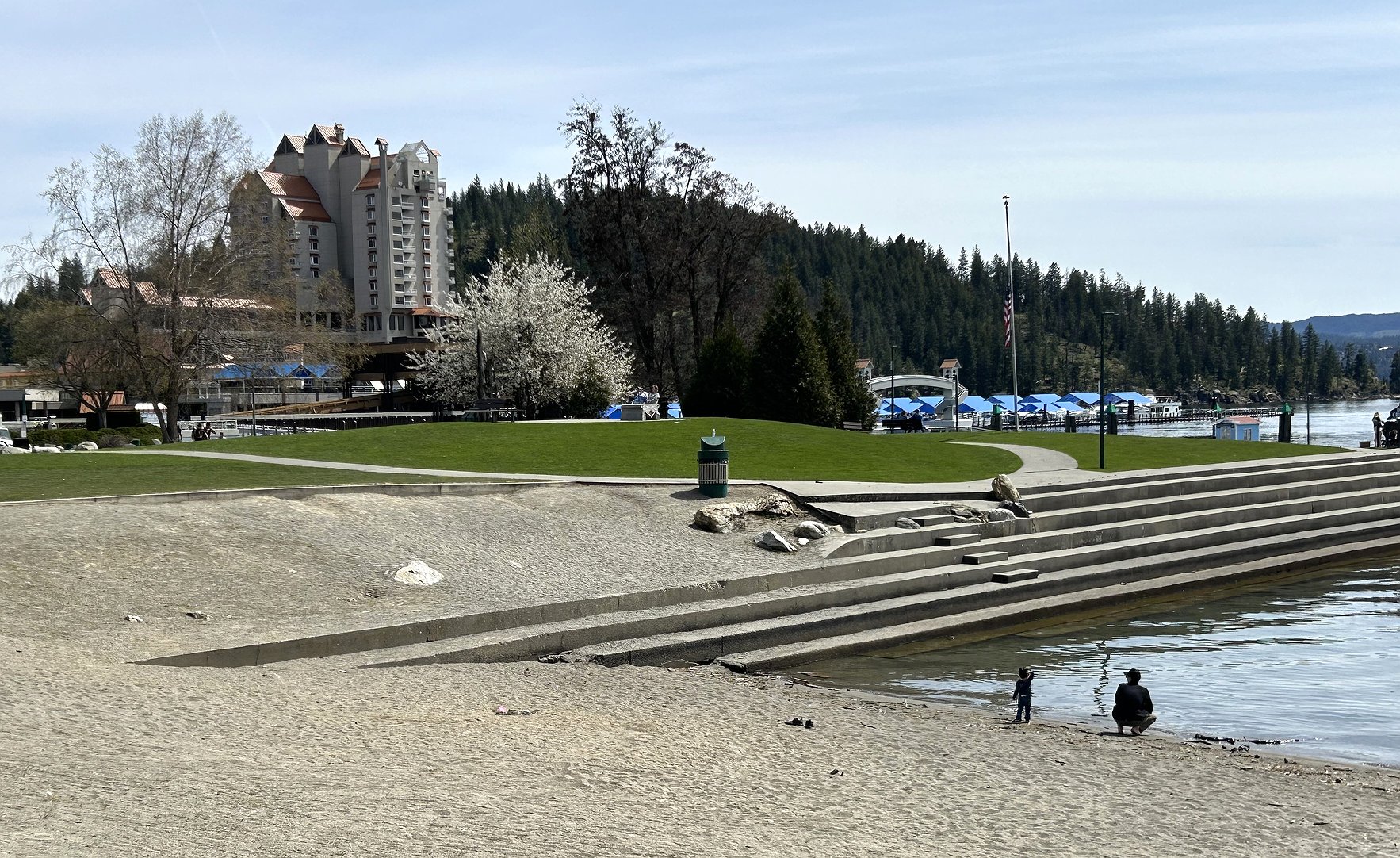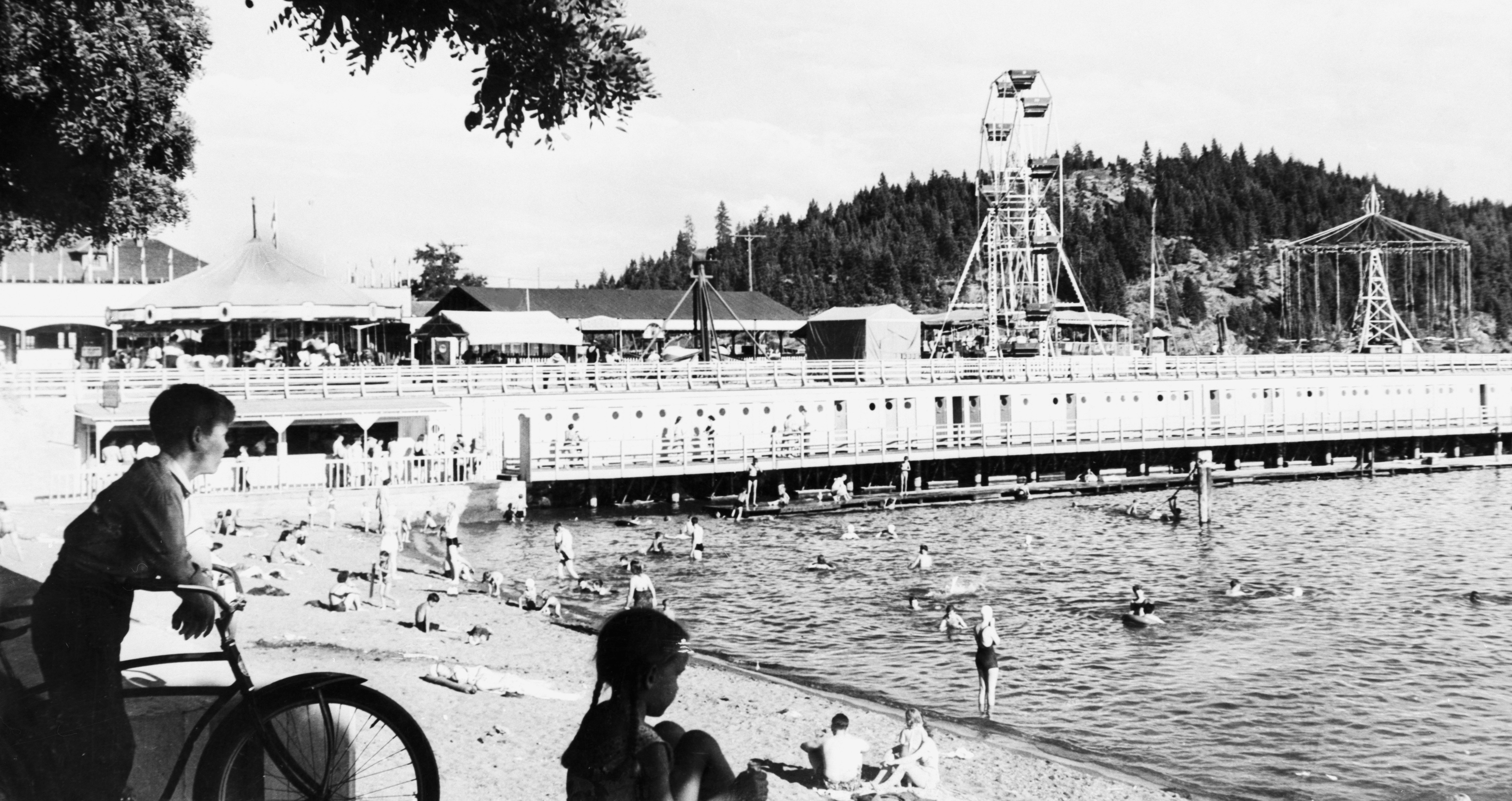'How I saw it'
COEUR d’ALENE — A Ross Hall picture taken in 1947 shows a boy and girl sitting on the seawall at Coeur d’Alene’s City Beach. They seem to be looking at the rides of Playland Pier that once stood at Independence Point.
Don Pischner said Tuesday that boy was him, though there are skeptics.
“It’s disputed whether it’s really me or not, but I’m going to claim it anyway,” he said with a laugh to about 30 members of the Coeur d’Alene Sunrise Rotary Club.
Pischner, District 1 trustee, Idaho State Historical Society, outlined what things were like growing up in Coeur d’Alene in the late 1940s to the early 1960s, and what it’s like today.
“Coeur d’Alene as you see it and how I saw it through my eyes," Pischner said during his 20-minute presentation at The Coeur d'Alene Resort.
No surprise. It’s a new world and not everyone loves it.
"A lot of changes,” he said.
To prove his point, Pischner showed a stream of pictures, before and after.
The F.W. Woolworth Co. store on the 300 block of Sherman Avenue before it burned down in 1980 is today the Coeur d’Alene Rotary Centennial Park.
The Wilma Theater that used to be at Second and Sherman is now a vacant grass lot.
Seventh Street and Montana Avenue was home to Coeur d'Alene High School, which Pischner attended. Today, it's G.O. Phippeny Park.
A feed store and service station used to be where the Museum of North Idaho sits on Northwest Boulevard.
And Lakeview Court, with cabins and trees, has long been replaced by Coeur d’Alene North condominiums.
“This is what I saw, same spot, “ Pischner said.
He showed a picture of the 1905 Roosevelt School, where he once attended school.
“It hasn’t changed much,” Pischer said. “It would be nice to save it.”
Deb Mitchell, who volunteers at the Museum of North Idaho and has studied the area’s history, said she was discouraged most recently by the demolition of the 1925 home on East Lakeshore Drive once owned by the late Dr. E.R.W. "Ted" Fox.
And despite efforts to save it, it's still possible the historic Roosevelt School on Wallace Avenue could fall to development.
“The rapid pace of demolition in this city is worrisome because no one knows what’s coming down next,” she said.
Mitchell questions how Coeur d’Alene is changing. She said many have told her they no longer recognize the town where they grew up.
“I feel as though I'm in another country sometimes,” she said.
Pischner said that decades ago, Coeur d’Alene was dominated by waterfront lumber mills like DeArmond, Atlas and Rutledge. Train tracks crisscrossed the town, with five rail companies in operation.
"It was incredible," he said.
Coeur d'Alene's waterfront, today inviting and welcoming with The Coeur d'Alene Resort, The Boardwalk, playgrounds, docks and flowers, was back in the day a far tougher, rougher world where men worked, not where children played.
“As kids, our parents told us, never go there, stay out of there,” Pischner said.
While most of the places he grew up with are gone, Pischner can only shake his head and said it's inevitable.
“Probably the right thing to do," he said. "I don’t have any remorse about it. It’s all part of growth.”





